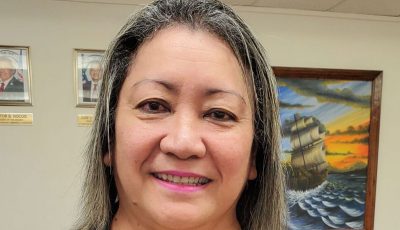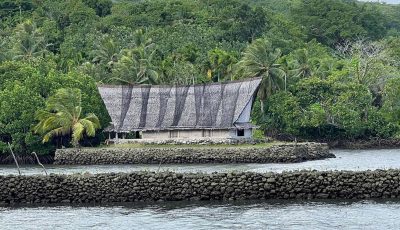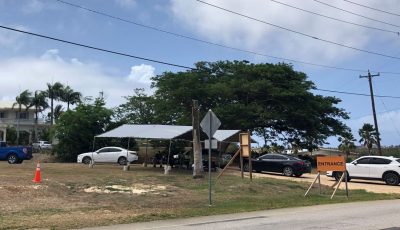Achugao watershed pollution comes from multiple sources
BECQ works with families to prevent pollution
The U.S. Environmental Protection Agency has identified outhouses, illegal dumping, piggeries, urban runoff, and livestock grazing as potential pollution sources in the Achugao watershed.
As for the pollutants most affecting the watershed, Kaitlin Mattos, watershed coordinator at the Bureau of Environmental and Costal Quality, said they do not entirely have the information yet. One reason is because some indicators of pollution can have multiple sources.
Mattos said BECQ analyzes the water for nutrients, turbidity, bacteria, and other parameters. They do beach sampling weekly, and stormwater sampling whenever there is enough rain to cause a flow into streambeds, she said.
Nutrients like nitrogen or phosphorus are known to come from human and animal waste, fertilizers, food waste, and factories.
Turbidity—the cloudiness of the water—is an indicator of erosion, dirt, algae and other particles in the water, and bacteria are an indicator of human or animal waste, Mattos said.
For example, if a lot of bacteria is found in a certain stream sample, this could be due to pig waste being discharged into the stream, illegal dumping of used baby diapers, a leaking septic or sewage pipe, an outhouse, a restaurant disposing its food waste, or a combination of these things, she said.
“Our tests won’t tell us the source, only that the water is impaired and may be dangerous to human health,” Mattos said.
From these tests, BECQ walks the streambeds and visit the communities in the area.
“We might check out the area around that stream site and find that there are no restaurants or houses, but there are several farms with cows tied up near the stream,” she said as an example.
Without expensive tests and waiting for months to get results from off island, most people would probably guess correctly that the cows are contributing to the bacteria count in that stream, she said.
“You can assume that if we remove the cows or push them farther back from the water flow, then the water will be cleaner. This is a much more efficient and lower cost way to identify and prevent pollution,” Mattos said.
This is what BECQ is doing now.
Project coordinators Kathy Yuknavage and Clarissa Bearden are visiting houses and stream sites in the Achugao area and looking for possible sources of pollution, and from there helping families find ways to clean them up, according to Mattos.
This is done by helping families create cleaner ways to deal with their pig’s waste, helping them seal off their water pipes so they do not discharge into the stream, or helping them move animals back off of the streams in the area, for example, Mattos said.
“If we still see pollutants showing up in our water samples, we know to keep looking for more sources and more ways to fix them,” she said.



























